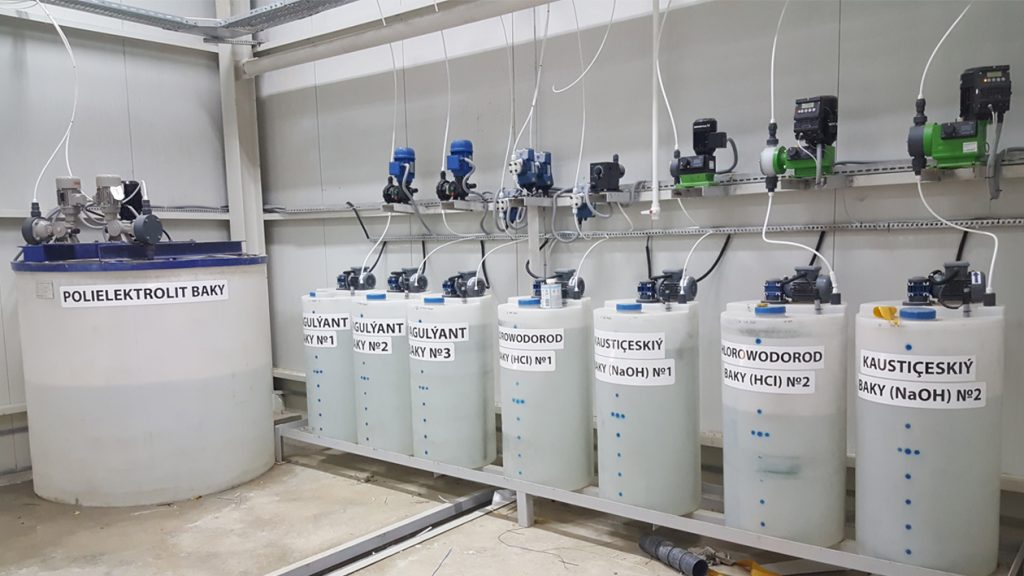
DISINFECTION SYSTEMS
Chlorine Dosing Systems
Chlorine dosing systems are one of the most common systems used for disinfection. In addition to its permanent effect, chlorine dosing system is one of the most economical methods. Chlorine dosing units are used to oxidize substances such as nitrite, iron, manganese in water and disinfect impurities such as bacteria and viruses.
On / Off Controlled Dosing Systems
In these systems, dosing is adjusted manually. The amount of chemical to be dosed is adjusted by the stroke value on the pump. As with other dosage pumps, many different fluids can be dosed with these pumps.
ORP Controlled Dosing Systems
ORP controlled systems measure the chemical dosage by measuring the amount of chemical in the water. It stops the dosage or continues dosing by measuring the amount of chemical set. Depending on the set inlet and outlet pH values, chemical dosing starts or stops dosing automatically. In these models, apart from the dosing pump and control panel, there are electrodes (probe) and an analyzer for measurement.

Flow Controlled Dosing Systems
It provides dosing opportunity according to the amount of flowing water in flow control dosing pumps. The meter measures the passing fluid and sends a pulse to the pump, and the pump doses the desired chemical.
Ozonation Systems
Ozonization Systems are advanced technology systems used for disinfection of drinking water. Ozone, which is a two times more effective gas than chlorine, has a high oxidation power. Ozonization Systems can be used to clean water and give a crystal clarity to the water by adding O3. Especially due to its ability to kill bacteria, viruses and molds, and to remove iron, sulfur, manganese and hydrogen sulfate, thus removing the biological contamination in the water.Since the ozone systems are the most effective in cleaning water and are very environmental friendly systems, they are used in the majority of drinking water factories in the world, in the food industry to disinfect the water, to disinfect the water in large aquariums and fish farms, to clean wastewater and to remove toxic wastes. Ozonization Systems are designed by the A.O. Smith expert engineers as a result of various analyses and offered in proportion to the required water.

System Features
- Do not leave chemical residue in water or air.
- Don’t give water a chemical smell or taste.
- Destroy harmful microorganisms in the water.
- Degrade iron and manganese. Environmentally friendly
Ultraviolet Water Disinfection System
The ultraviolet device destroys the cell structures of microorganisms such as bacteria, viruses, and fungi in water with the ultraviolet rays emitted by the UV lamp inside it and neutralizes them.

The ultraviolet device consists of four sections: stainless steel body, UV lamp case, UV lamp and control panel. Water enters the stainless steel body, is exposed to UV rays here and exits the filter sterile. The process of rendering the microorganisms in water harmless by damaging their DNA and/or RNA structures by exposing them to ultraviolet rays of 254 nm wavelength with the Ultraviolet disinfection system is called microbiological treatment. Ultraviolet is an effective disinfection method that eliminates 99.999% of pathogenic and pyrogen bacteria, viruses, fungi and other microorganisms that can be found in water.
Since heat and chemicals are not used in this method, there is no change in the taste and composition of the water at the end of disinfection. In order for the UV rays to have full effect, the water must be subjected to a delicate filtration process, the application must be after storage and before final use, and a UV system with appropriate flow capacity must be selected.

